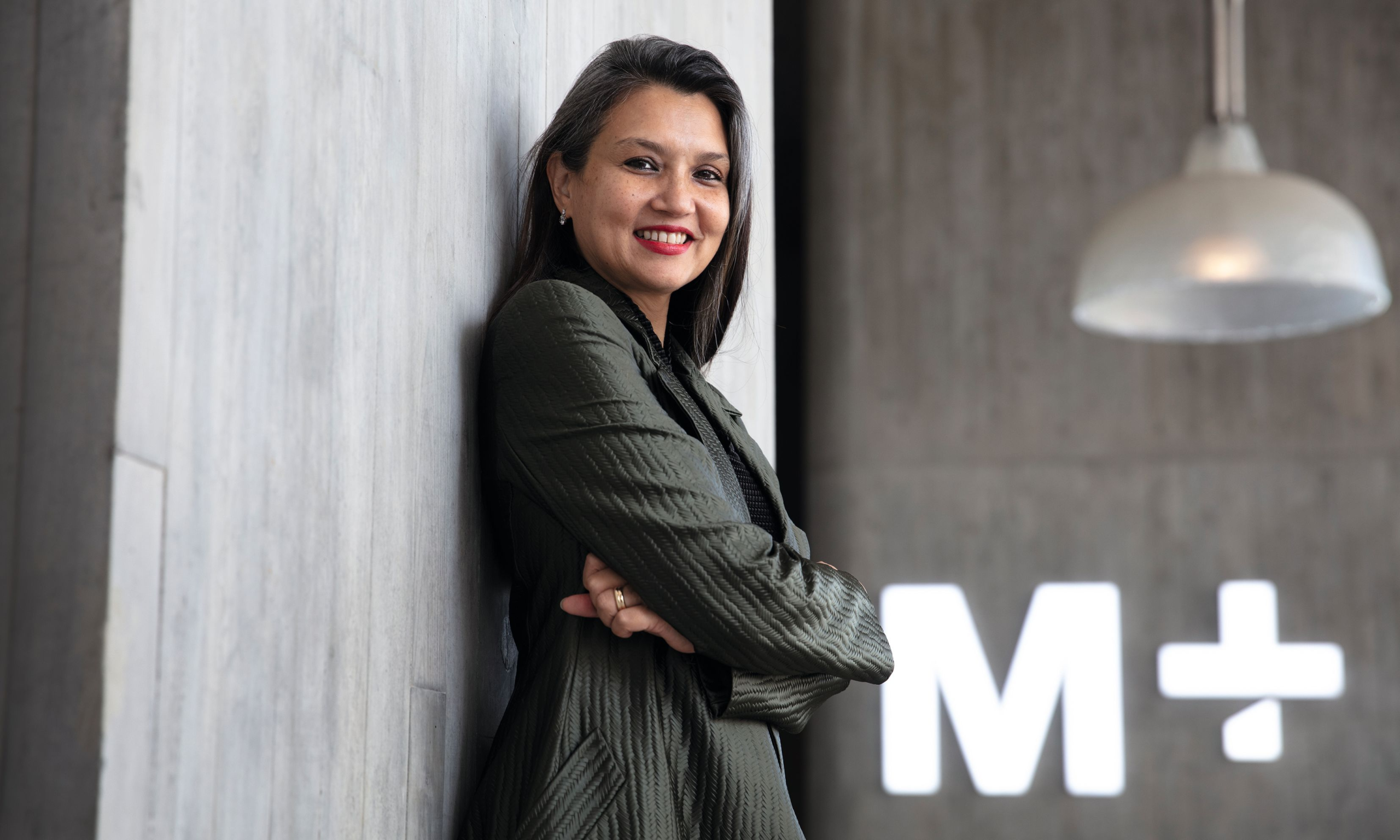Suhanya Raffel Image: Courtesy of West Kowloon Cultural District Authority
Hong Kong’s art season kicks off this week with the city’s first international cultural summit, gathering together influential figures from the arts, architecture, life sciences, gaming and technology. Hosted by the West Kowloon Cultural District Authority (WKCDA) on 24-26 March, a series of panel discussions is taking place at three venues: M+, Hong Kong Palace Museum (HKPM) and Xiqu Centre.
The summit—which aims to burnish Hong Kong’s reputation as an East-meets-West art hub—also turned the spotlight on M+, which opened in 2021 when the city was essentially closed off from the world during the Covid-19 pandemic. “We have invested so much to build deep and serious infrastructure in Hong Kong. This year, it felt timely to celebrate that with international guests,” says Museum Director Suhanya Raffel.
With the theme “Connecting Cultures, Bridging Times”, the Hong Kong International Cultural Summit 2024 is conveyning more than 1,000 participants from across the globe including officials from leading cultural institutions such as the Victoria and Albert Museum, Centre Pompidou and Tokyo National Museum. Speakers are delving into topics such as artificial intelligence, the role of art hubs in community-building and the future of global cultural institutions. Here, Raffel discusses the summit and offers a preview of M+’s forthcoming international projects.
What inspired WKCDA to organise the Hong Kong International Cultural Summit?
Suhanya Raffel: One of the unique features of the West Kowloon Cultural District is that we have so many colleagues working together across disciplines. We wanted to announce what a cultural district like this does for a city, the region and the world. After doing so much work on infrastructure, we are now operational, so this was a moment for us to celebrate and hold a summit to invite colleagues from different museums and professions to speak about culture and placemaking.
West Kowloon Cultural District Image: courtesy of West Kowloon Cultural District
What sets this summit apart from others?
It celebrates how culture adds to a city in the most profound way. We live in complex times and complex regions with relationships that need to be explored, and cultural institutions do that in the most generous way. We remember who we are through culture. The summit is also an invitation to think about where we are going, and how we are working with artists and makers in terms of our future.
The topic of technology and its growing influence is emerging in several panels including “Decentring Digital”, which you are moderating. What are some key issues for museums to consider?
Technology comes out of human culture but we also need to digest and think intelligently about its use because it can have disastrous consequences if we don’t harness it for good. The “Decentring Digital” panel was thinking about the museum’s role in all of this. The world becomes our oyster through technology, but it can also be very confusing. How do we then think about that? How do we invite audiences to come in and use and explore technology? We need to unpack that and deliver thoughtful, insightful responses.
We also have another panel called “Promise of Digital”. At these events we invited two very creative voices to explore what technology means for them: Refik Anadol, a US-based Turkish artist working in extraordinary, experimental ways and Ma Yansong, the architect, from Beijing. There are also speakers like María Wills Londoño from Bogotá, Colombia, where technology is not as available. We wanted to consider how biological intelligence is distinct from artificial intelligence.
Why was it important for the summit to include voices from outside the art world?
Museums today function in a different way from 50 or even 20 years ago. They have become important civic institutions and they play multiple roles within communities. So bringing in experts from fields outside museum practice is as important as inviting museum voices. Examples include Maholo Uchida, who was among the first people in Japan to work with robotics, and Professor Michael John Gorman who has a deep interest in science, nature and art. It is fascinating to be able to bring different voices together. The museum then becomes a platform that is about knowledge building and research. Historically, this has always been one of our core business principles, but now we are looking at it in terms of our 21st century reality.
Why are events like this essential in Asia?
In Asia, we are seeing the building of a plethora of institutions so it’s important to have regular symposia where we get together. Having summits helps locate how culture is being harnessed and how these institutions function in our communities.
M+, the Hong Kong Palace Museum and the WKCD’s performing arts division signed collaborative agreements with more than 20 art and cultural institutions at the summit. Can you share more about M+’s future collaborations?
The partnerships will be wide ranging. We signed a memorandum of understanding with Qatar Museums to take a wonderful exhibition about the architect I.M. Pei to Doha. We are also working with colleagues in Singapore and Thailand on establishing an important Asian avant-garde film circulation library. We are able to do this because of our partnership with Chanel. The library is about building a repository for the great experimental practices that have come out of cinema in this region, which is very rich but not well known. As an institution of visual culture, where moving image is one of our key pillars, we want to do substantial work around championing creative voices from this part of the world.

